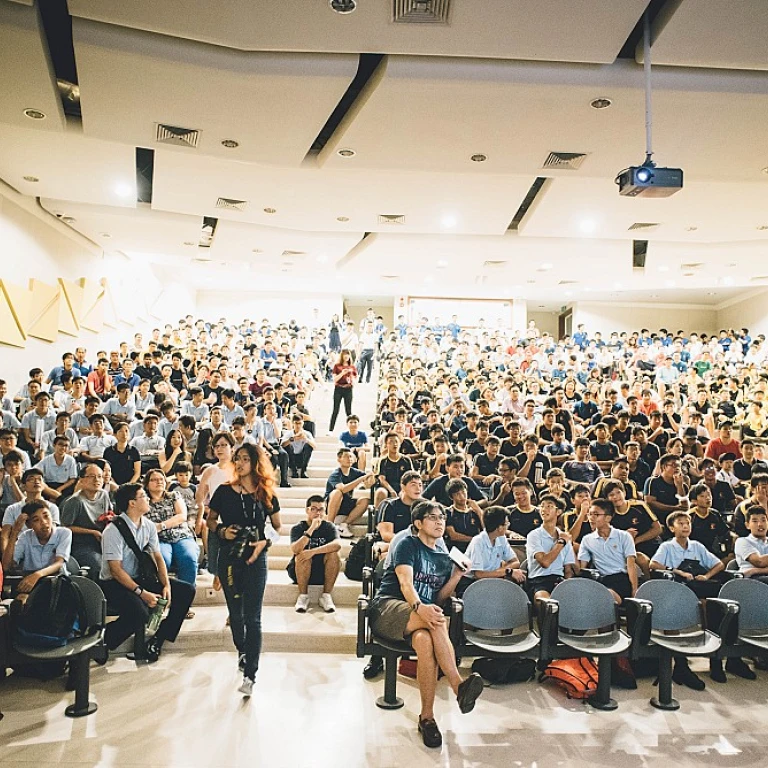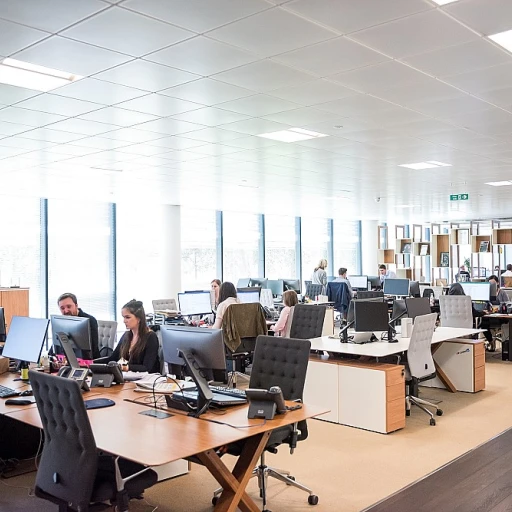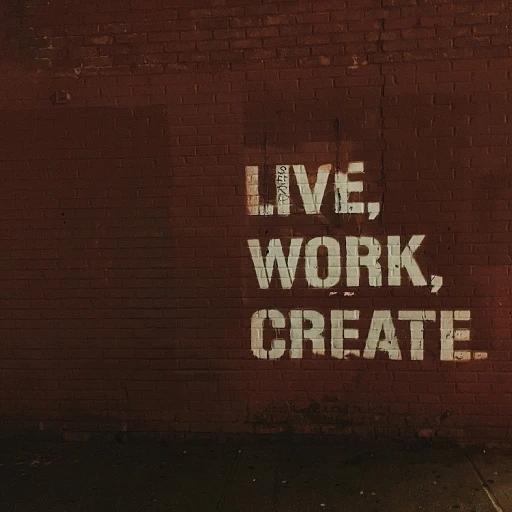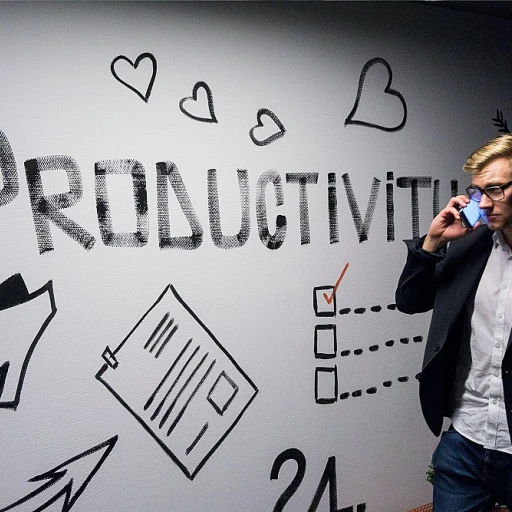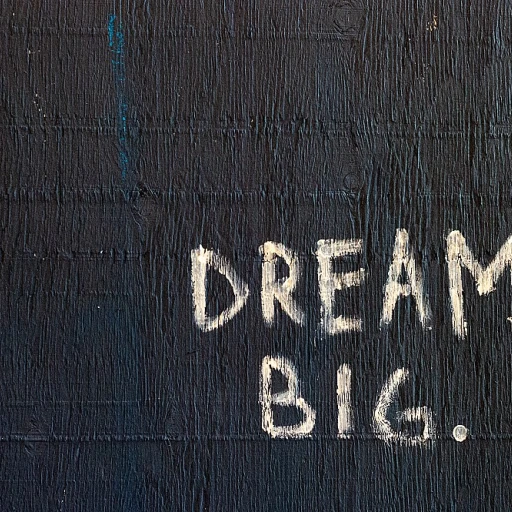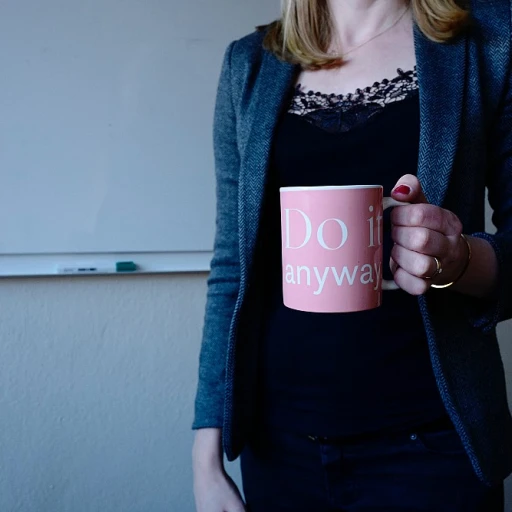
Understanding Work-Life Balance: The Foundation of Well-being
Building the Foundation for Work-Life Harmony
Understanding work-life balance is a crucial first step in the journey toward overall well-being. This balance is the equilibrium where an individual equally prioritizes the demands of their career and the requirements of their personal life, which forms the cornerstone of health and wellness. Achieving this balance can resemble a weight loss journey—it's personal, gradual, and requires commitment. Just as participants in a fitness challenge might set weight loss goals, employees can aim to balance their work and personal lives, ensuring that neither is neglected.- Wellness as a Core Principle: Success in managing work-life balance often hinges on adopting a wellness-focused mindset. This involves embracing healthy habits both in the workplace and at home. Employees can engage in activities that promote mental and physical health to create a balanced lifestyle.
- Establishing a Wellness Program: Encouraging a culture of wellness within the office can help employees manage stress and maintain their health. A structured wellness program can offer office weight loss challenges or fitness challenges to keep challenge ideas fresh and participants motivated.
Identifying Personal Priorities: Balancing Work and Personal Life
Aligning Personal and Professional Goals for Better Balance
Finding the delicate balance between work and personal life often starts with identifying and understanding personal priorities. It's essential to align your professional obligations with your personal ambitions to truly achieve harmony. Here’s a guide to help you set your priorities wisely:- Reflect on Your Core Values: Knowing what matters most to you is the first step. Whether it's family, fitness, or personal growth, clarity in values will guide your decisions.
- Set Realistic Goals: Align your personal wellness aims, such as joining a corporate wellness program or participating in a fitness challenge, with your professional objectives. This could include setting weight loss goals that do not interfere with your work commitments.
Clear Priorities for Effective Time Utilization
When you are clear about your priorities, it becomes easier to allocate your time effectively:- Rank Your Tasks: Distinguish between the urgent and the important. This helps in structuring your day to ensure personal time doesn’t get sacrificed for work emergencies.
- Blend Activities: Combine office work with healthy opportunities. For example, consider short "exercise" breaks throughout the workday or organize "fitness challenges" that engage all "participants" sensibly.
Time Management Techniques: Maximizing Productivity and Leisure
Effective Time Management for Enhanced Work-Life Integration
In the pursuit of a balanced work-life environment, efficient time management stands as a cornerstone. By mastering this skill, employees can maximize both productivity and leisure without compromising their well-being. Here, we'll explore several strategies to optimize time effectively.
- Prioritize Tasks: Start by identifying key tasks and objectives important to both your professional and personal realms. This helps in setting clear priorities and focusing your day on what truly matters.
- Create a Schedule: Design a daily or weekly schedule that allocates time for work responsibilities, fitness activities like a weight loss challenge, and personal downtime. Consistency in your schedule can greatly enhance your overall wellness.
- Set Realistic Goals: Formulate achievable goals such as losing weight or improving healthy eating choices. Track progress with set checkpoints to maintain motivation and a sense of accomplishment. This is especially beneficial in structured wellness programs and weight loss journeys.
- Minimize Distractions: In both office environments and at home, distractions are inevitable. Identify frequent distractions and devise strategies to minimize their impact. For instance, implementing office weight loss challenges can be both a healthy distraction and a motivational challenge to stay active.
- Utilize Technology Wisely: While technology can aid in efficiency, it's crucial to use it wisely. Tools and apps can help in task management and time tracking, but be cautious about letting technology interrupt personal time. For further insights on managing emotions in the workplace to improve balance, check navigating work emotions for better balance.
Time management is not just about squeezing the most productivity out of each day but about making time for what truly enriches your life both inside and outside the office. Remember, the ultimate goal is to create harmony in your work-life balance.
Setting Boundaries: Protecting Personal Time and Space
Carving Out Personal Time in the Professional World
Establishing boundaries between work and personal life is essential to maintaining a healthy balance. In an era where the lines between the office and home can blur, protecting your time and space has become a primary concern for employees at every level. One significant way to set these boundaries is by communicating availability clearly. Whether you're participating in a corporate wellness program or taking part in a fitness challenge, your colleagues need to understand when you're reachable and when you're not. Use your calendar effectively to signal your availability. Another key aspect is creating a designated workspace at home, if possible. This helps delineate work hours from personal time, ensuring you aren't tempted to tackle office tasks outside designated hours. A clear physical separation can help keep day-to-day stress at bay. Technology, while an incredible tool, can sometimes hinder work-life balance. Constant notifications on your phone can intrude into your private time. Consider setting specific 'tech-free' hours during the day – moments where you disconnect to reconnect with yourself or your loved ones. Participating in wellness initiatives, such as a weight loss challenge, can help in setting these boundaries. These programs often encourage healthy habits and remind employees of the significance of taking breaks and focusing on personal health. Scheduling regular fitness challenges and weigh-ins can serve as a natural boundary between work commitments and personal health goals, helping you to track progress and create more structure in your daily routine. Challenges like these not only boost personal health but also enrich your professional life by proving that dedicating time to personal wellness is an investment in productivity and overall well-being.The Role of Technology: Friend or Foe in Work-Life Balance?
Technology's Influence on Balancing Work and Life
In today's digital era, technology plays a pivotal role in shaping how we approach work-life balance. While it offers tremendous potential to streamline tasks and enhance productivity, it also presents challenges that can impact our well-being if not managed wisely.
On one hand, technological tools provide employees with flexibility, enabling remote work and the possibility to engage in a fitness challenge or wellness program without being confined to a physical office space. These advancements can greatly aid in maximizing productivity while allowing time for healthy activities, like participating in an office weight loss journey challenge or opting for healthy eating habits. By using technology to schedule tasks and keep track of work from various locations, employees can pursue personal loss goals such as exercise or fitness challenges.
However, the ubiquitous nature of digital connectivity can blur the lines between work and personal life. Constant notifications, emails, and messages can intrude on personal time, making it difficult to maintain a clear division between work obligations and leisure activities. This can lead to stress and hinder one's ability to achieve an optimal balance. Here are some strategies to harness technology effectively:
- Setting boundaries: Use scheduling apps to allocate specific times for work, exercise, and wellness activities, such as an office weight loss challenge or fitness goals. This ensures that personal time is protected and respected.
- Utilizing productivity tools: Leverage project management and time-tracking apps to monitor tasks and deadlines, freeing up time for relaxation and wellness. These tools can help track progress not just in work but also in personal challenges like losing weight.
- Digital detox: Designate periods to unplug and disconnect from gadgets, embracing mindfulness and reducing stress. This can significantly contribute to a healthy work-life balance and enhance overall well-being.
Recognizing technology's dual role in work-life balance is essential. While it holds the potential to support both professional tasks and personal wellness goals, careful management is imperative to prevent it from becoming a foe in the pursuit of balance. Navigating these digital intricacies requires careful attention and thoughtful application to yield the best outcomes for both productivity and personal health.
Mindfulness and Stress Management: Essential Tools for Balance
Mindful Practices to Ease the Journey
Finding a balance between work and personal life requires an array of tools and practices that can effectively ease daily stress and maintain overall wellness. One such invaluable tool is mindfulness, a practice that encourages awareness and acceptance of the present moment. This approach is particularly beneficial in managing the demands of both professional and personal domains.
Incorporating mindfulness into your daily routine can have a profound impact on reducing stress and increasing focus, which is crucial when juggling multiple priorities. Techniques such as deep breathing exercises and short meditation sessions can help employees stay centered amidst a busy workday. When discussing work-life balance, these techniques serve as essential stress management tools that can complement other practices aimed at achieving balance.
Setting clear boundaries, as we explored earlier, is another way to cultivate a healthy work environment, which can be enriched by a mindfulness practice. By clearly defining work and personal time, employees protect their mental space, and mindfulness enhances this by promoting relaxation and alertness during both work and leisure times.
- Start the day with a mindful morning routine: dedicating even five minutes can prepare you for the day’s challenges.
- Incorporate short mindfulness sessions throughout the workday – this could be as simple as a few deep breaths between tasks.
- End the day with a reflection or gratitude practice to acknowledge the achievements and learnings of the day, which aids in setting new productive goals.
The integration of mindfulness in the workplace can significantly aid in tackling the challenges associated with modern office environments. It supports the broader goals of corporate wellness programs, which often include initiatives like fitness challenges and healthy eating campaigns. Participants in such wellness programs can better focus on their weight loss goals and other health ambitions by grounding their efforts through mindfulness.
A mindful approach invites a newfound awareness that empowers employees to navigate their work and personal commitments effectively. By fostering this mindset alongside healthy practical strategies, you can enhance your overall well-being and approach the day-to-day with a renewed perspective.
